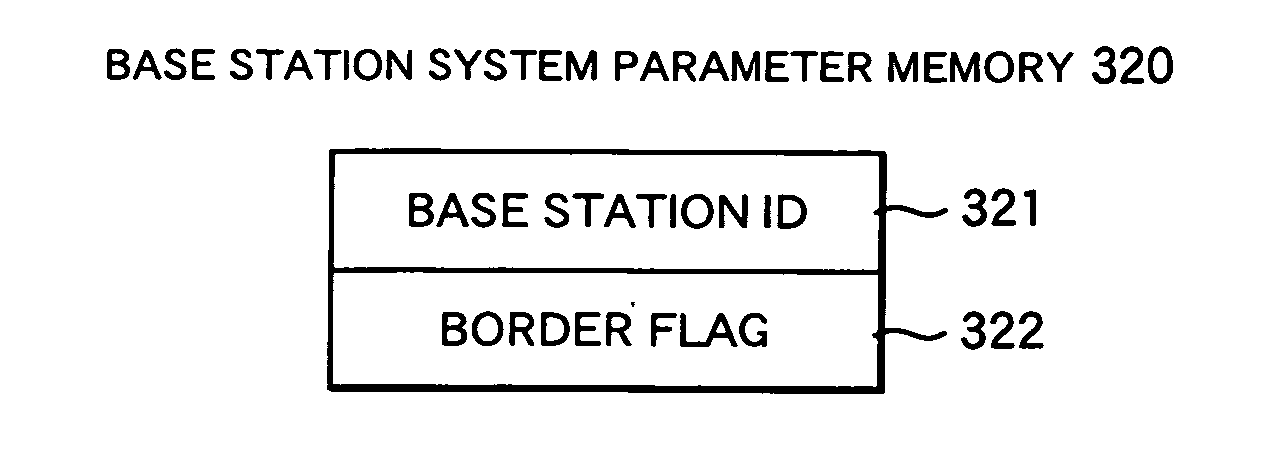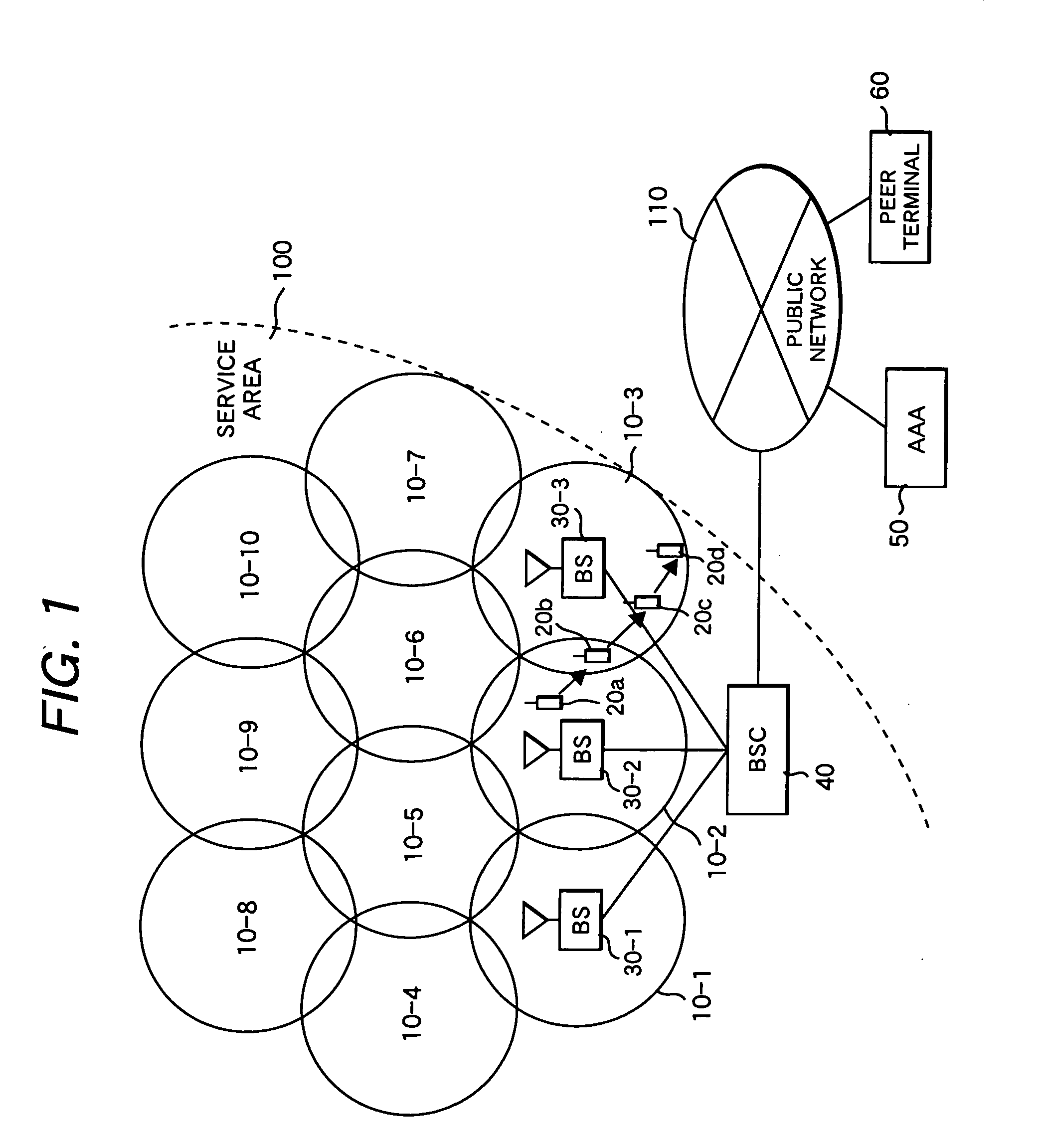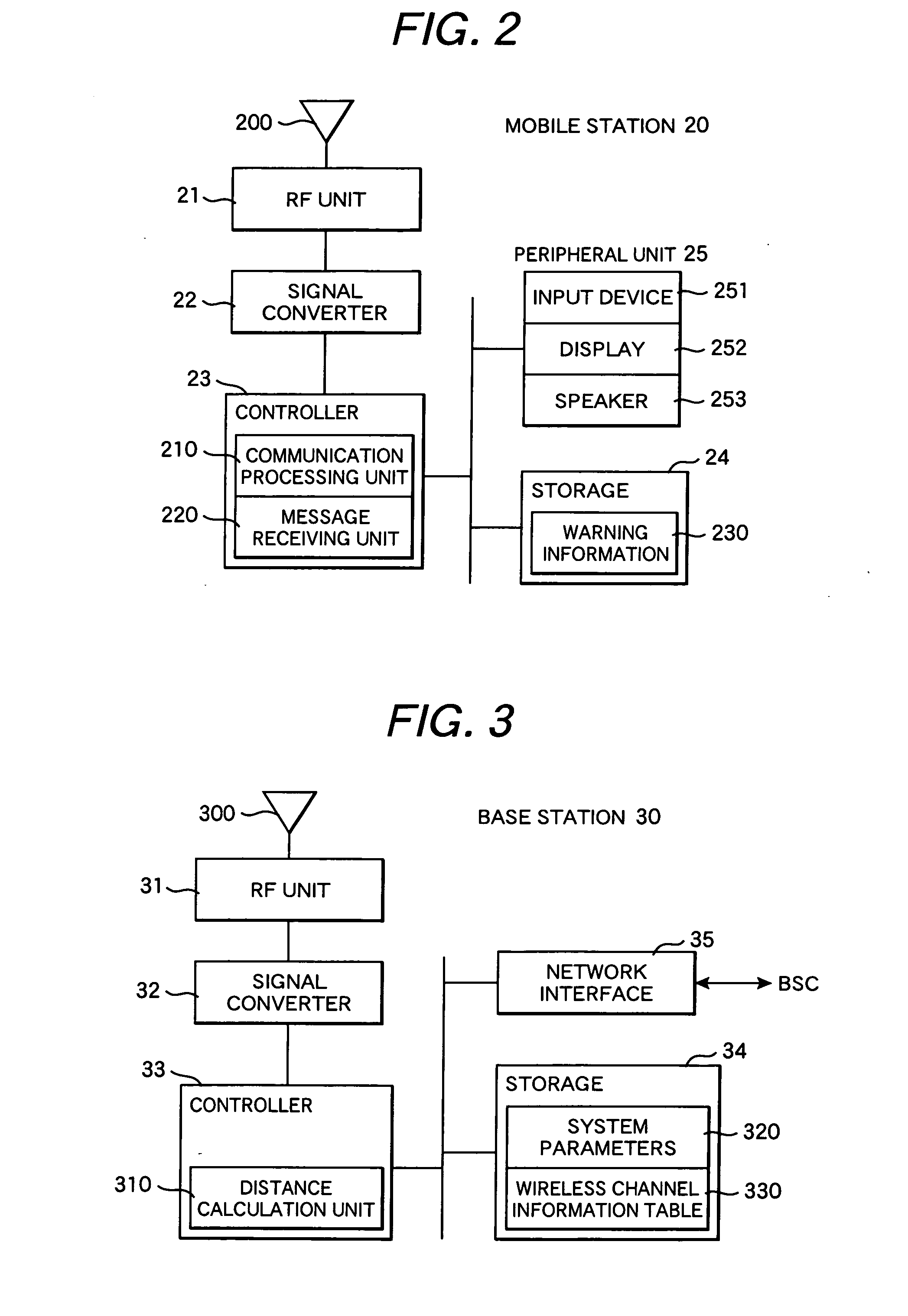Mobile communication system detectable mobile station moving out of communication range
a mobile communication system and mobile station technology, applied in the field of mobile communication systems, can solve the problems of deteriorating accuracy of handover history prediction as to inability to recognize the sudden change in the direction of the progress of the mobile station, and low accuracy with which the mobile station is detected to the outside of the service area. to achieve the effect of high accuracy detection
- Summary
- Abstract
- Description
- Claims
- Application Information
AI Technical Summary
Benefits of technology
Problems solved by technology
Method used
Image
Examples
first embodiment
[0058] With reference to FIGS. 8 and 9, a detailed description will be given next to a communication sequence to be performed in the mobile communication system according to the present invention when the mobile station 20a which started mobile communication in the normal cell 10-2 of FIG. 1 has moved toward an out-of-communication range outside the border cell 10-3.
[0059] The mobile station 20 (20a) having moved into the cell 10-2 transmits to the base station controller 40 a control signal indicating a request for setting up a wireless channel with the base station 30-2 (SQ1). The base station controller 40 having received the control signal transmits an instruction signal for channel setting to the base station 30-2 (SQ2). The base station 30-2 having received the channel setting instruction signal sets up a wireless channel with the mobile station 20a (SQ3). At this time, the distance calculation unit 310 in the base station 30-2 measures the signal round-trip delay on the wirel...
second embodiment
[0090] A description will be given next to the mobile communication system according to the present invention with reference to FIGS. 14 to 16.
[0091] In the second embodiment, even when the radii of the cells are different by base station, setting the thresholds in accordance with the size of the cell is allowed by providing each of the base stations with specific out-of-range / within-range thresholds. The second embodiment is different from the first embodiment in the base station system parameters 320, in the management method for the handoff information, and in the out-of-range detection processing performed by the base station controller 40.
[0092] In the mobile communication system according to the second embodiment, each of the base stations includes not only the base station ID 321 and the border flag 322 but also an out-of-range threshold 323 and a within-range threshold 324 as the base station system parameters 320, as shown in FIG. 14. As the out-of-range threshold 323 and ...
PUM
 Login to View More
Login to View More Abstract
Description
Claims
Application Information
 Login to View More
Login to View More - R&D
- Intellectual Property
- Life Sciences
- Materials
- Tech Scout
- Unparalleled Data Quality
- Higher Quality Content
- 60% Fewer Hallucinations
Browse by: Latest US Patents, China's latest patents, Technical Efficacy Thesaurus, Application Domain, Technology Topic, Popular Technical Reports.
© 2025 PatSnap. All rights reserved.Legal|Privacy policy|Modern Slavery Act Transparency Statement|Sitemap|About US| Contact US: help@patsnap.com



